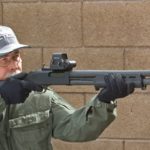“A small step forward for self-defense rights.”
In California!
Judges usually instruct juries using so-called “pattern jury instructions”—instructions prepared by the court system for judges to use. In principle, judges can write their own, or adopt instructions sought by one or both parties, but practically judges and lawyers heavily rely on the pattern instructions.
Until recently, the comments to the California pattern jury instruction for carrying-a-loaded-firearm prosecutions (CALCRIM No. 2530) noted that the instruction should be given in Taser carrying cases, and presumably that the jury should be told,
“[A] Taser is a firearm and can be a loaded firearm within [firearms carrying bans].” (People v. Heffner (1977) 70 Cal.App.3d 643, 652 [139 Cal.Rptr. 45].)
But while Heffner did so state, it was speaking about early Tasers, in which “[t]he contactors [were] deployed … by the electrical ignition of a squib containing four-fifths of a grain of smokeless powder.” But modern Tasers don’t use gunpowder, precisely to avoid a similar 1976 federal decision that held that they were firearms. Today, then, Heffner would likely no longer be binding. But so long as the CALCRIM notes mentioned Heffner, that would increase the likelihood that prosecutors would recommend instructions that said that a Taser was a firearm, judges would adopt them, and then juries would consider them.
by Eugene Volokh



